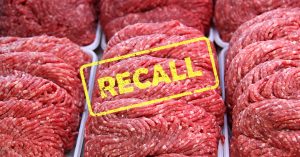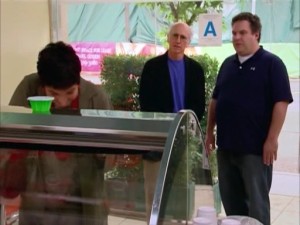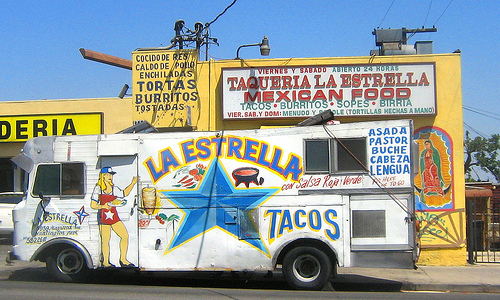National Meat and Provisions, a Reserve, La. establishment, is recalling approximately 2,349 pounds of beef and veal products that may be contaminated with E. coli O26, the U.S. Department of Agriculture’s Food Safety and Inspection Service (FSIS) announced today.
 The raw non-intact beef and veal items were produced and packaged on Sept. 14-15, 2016. The following products are subject to recall: [View Labels (PDF Only)]
The raw non-intact beef and veal items were produced and packaged on Sept. 14-15, 2016. The following products are subject to recall: [View Labels (PDF Only)]
51.40-lb. of VACUUM-PACKED “BEEF GROUND COMPANY BURGER BLEND,” packed on 9/14/2016 with a lot number of “00028584” and case codes of 53085/CB136 in the upper left-hand corner of the label
50.00-lb. of VACUUM-PACKED “BEEF GROUND COURSE STEAK TRIM,” packed on 9/14/2016 with a lot number of “00028582” and case codes of 53080/02300H in the upper left-hand corner of the label
10.00-lb. of VACUUM-PACKED “BEEF GROUND FRESH,” packed on 9/14/2016 with a lot number of “00028583” and case codes of 53110/02300P in the upper left-hand corner of the label
50.00-lb. VACUUM-PACKED “BEEF GROUND CHIMES FINE,” packed on 9/14/2016 with a lot number of “00028581” and case codes of 56660/02300C in the upper left-hand corner of the label
51.46-lb. VACUUM-PACKED “BEEF GROUND COMPANY BURGER BLEND,” packed on 9/15/2016 with a lot number of “00028597” and case codes of 53085/CB136 in the upper left-hand corner of the label
10.00-lb. VACUUM-PACKED “BEEF FAT OF RIB CAP,” packed on 9/15/2016, with a lot number of “00028595,” and case codes of 50010/1138 in the upper left-hand corner of the label
10.83-lb. VACUUM-PACKED “BEEF GROUND CHUCK DAT DOG,” packed on 9/15/2016, with a lot number of “00028593,” and case codes of 56135/02150 in the upper left-hand corner of the label
10.23-lb. VACUUM-PACKED “BEEF GROUND CHUCK BRISKET BURGER,” packed on 9/15/2016 with a lot number of “00028596,” and case codes of 53060/208116120 in the upper left-hand corner of the label
5.00-lb. VACUUM-PACKED “BEEF STEAK CUBED 5#,” packed on 9/15/2016, with a lot number of “00028594,” and case codes of 50565/04902 in the upper left-hand corner of the label
10.00-lb. VACUUM-PACKED “BEEF GROUND CHUCK 10#,” packed on 9/15/2016, with a lot number of “00028592,” and case codes of 53015/02100 in the upper left-hand corner of the label
10.11-lb. VACUUM-PACKED “BEEF STEAK CUBED,” packed on 9/15/2016, with a lot number of “00028591,” and case codes of 50555/1100GJ in the upper left-hand corner of the label
10.32-lb. VACUUM-PACKED “BEEF GROUND CHUCK BRISKET 8 oz.,” packed on 9/15/2016, with a lot number of “00028585,” and case codes of 53050/05M8 in the upper left-hand corner of the label
9.98-lb. VACUUM-PACKED “VEAL SIRLOIN CUBED POLY BAGED,” packed on 9/15/2016, with a lot number of “00028590,” and case codes of 56070/0776 in the upper left-hand corner of the label
The products subject to recall bear establishment number “EST. M-22022” inside the USDA mark of inspection. These items were shipped to a distributor, as well as hotels, restaurants and institutions in Louisiana.
The problem was discovered when the establishment received a positive STEC sample during their quarterly E. coli testing program on Sept. 29, 2016. There have been no confirmed reports of adverse reactions due to consumption of these products.
Many clinical laboratories do not test for non-O157 Shiga toxin-producing E. coli (STEC), such as STEC O26 because it is harder to identify than STEC O157. People can become ill from STECs 2–8 days (average of 3–4 days) after consuming the organism. Most people infected with STEC O26 develop diarrhea (often bloody), and vomiting. Some illnesses last longer and can be more severe. Infection is usually diagnosed by testing of a stool sample. Vigorous rehydration and other supportive care is the usual treatment; antibiotic treatment is generally not recommended.




 grade based on food inspections — in what may be the ultimate sign that this faddiest of food fads is going mainstream.
grade based on food inspections — in what may be the ultimate sign that this faddiest of food fads is going mainstream.